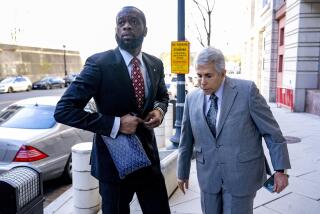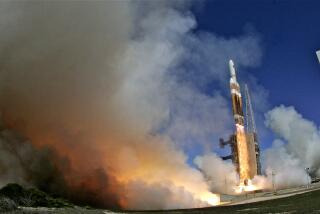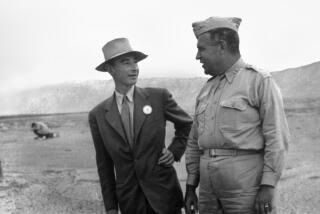Physicist Calls for Antimissile Inquiry
- Share via
WASHINGTON — A prominent physicist said Thursday that data brought to light by a Southern California whistle-blower prove that the Pentagon’s proposed antimissile system will not work and called for an investigation.
Theodore A. Postol, a Massachusetts Institute of Technology professor and leading critic of the proposed system, said that flight test results revealed in a lawsuit by former TRW engineer Dr. Nira Schwartz showed that interceptor missiles would be incapable of distinguishing incoming warheads from harmless decoy balloons.
Such discrimination is essential if the system is to defend the United States warheads launched by a so-called “rogue” nation, such as North Korea.
Postol sent his critique in a letter to the White House, urging an investigation and accusing the Defense Department of covering up the hardware’s shortcomings.
The test results showed that “they tampered with the data, with the analytical techniques, to make it look like they could pick out the objects,” he said.
The critique comes at a time of bitter, intense debate over the proposed system.
President Clinton is to decide this fall whether to deploy the antimissile shield, which advocates say would protect the nation from the missile threat, although it also threatens to endanger relationships with allies as well as potential adversaries.
The system could cost from $27 billion to $60 billion, depending on how far the government chooses to expand it.
Pentagon officials responded sharply to the critique, contending that the June 1997 flight test that Postol analyzed relied on a different “kill vehicle” hardware to identify the warheads and decoys.
For the last two years and in three flight tests, the system developers have used a kill vehicle that has two sensors rather than one and relies on a different mathematical formula for operations.
“It’s an entirely different system,” said Air Force Lt. Col. Rick Lehner, a spokesman for the Pentagon’s Ballistic Missile Defense Organization, which directs U.S. research and development of antimissile technology.
Officials said that they plan to give Postol a detailed rebuttal but do not intend to start an investigation.
Schwartz, 53, a naturalized U.S. citizen from Israel, joined TRW’s operations in Redondo Beach in 1995 to work on the company’s effort to create computer programs that would enable interceptors to distinguish between warheads and decoys.
But she accused the company of falsifying tests and evaluations and was fired in 1996 as a result, she said Thursday in an interview.
Schwartz sued the company in federal district court in Los Angeles, seeking $500 million in compensation for the government.
Although officials of the Justice Department have so far declined to join her suit, her case has received wide publicity.
Last month, as she traveled to MIT to discuss the antimissile program with Postol and colleagues, she showed Postol data that convinced him the system could not work.
In space, the kill vehicle sees the decoy and the warhead as points of light, and attempts to pick out the warhead by examining how each fluctuates in time.
But, Postol says in his letter to the White House, the data from the first flight test indicate that the points of light fluctuate in a “varied and totally unpredictable way.”
Consequently, there was “no fluctuating feature in the signals from decoys and warheads that could be used to distinguish one from the other,” he wrote.
Asked Thursday about the Pentagon’s rebuttal, Postol said that the choice of kill vehicle is irrelevant to his critique, since it concerns the signals that are emitted from the warhead and decoys.
“No algorithm is going to extract information where there is none,” he said. “They either don’t know what they’re talking about or they’re engaged in a cover-up.”
A TRW spokesman declined comment.







